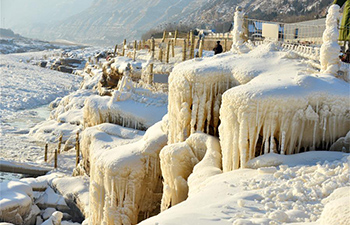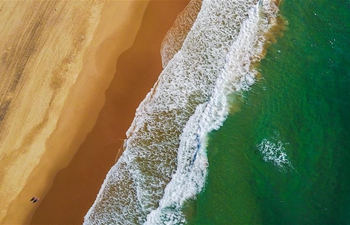SAN FRANCISCO, Jan. 16 (Xinhua) -- Researchers at the Scripps Institution of Oceanography, University of California-San Diego, are using a new hydroacoustics technology to study the fishes within and outside marine protected areas (MPAs) to protect marine wildlife.
The findings of the research were published in the journal Scientific Reports on Monday.
The researchers discovered that the abundance of marine life in Mexico's protected Cabo Pulmo National Marine Park is four times greater than in surrounding waters.
Cabo Pulmo is a 71-square-km undersea park established in 1995 to protect fishes. It has been the most popular site of studies by Scripps researchers since 2002.
The researchers used sound waves produced by hydroacoustic equipment mounted on boats to survey the waters and take images of schools of fishes and other marine life.
Fish density, total biomass, and the size of individual fishes were found to be significantly greater inside the MPA.
Compared with the marine life in non-MPA waters, the volume in reefs was as much as 50 times higher.
Hydroacoustics is a faster and less expensive way to generate information about marine resources inside MPAs, reducing ocean conservation costs for governments, said the co-author of the study, Octavio Aburto, who is a marine ecologist at Scripps.
Previous surveys of coastal marine life were often done through underwater visual censuses taken by scuba divers.
Conventional survey methods are often costly and can be affected by a host of negative factors such as diver depth limits and water clarity.
Researchers say hydroacoustic surveys are useful in gauging the benefits of MPAs.

















